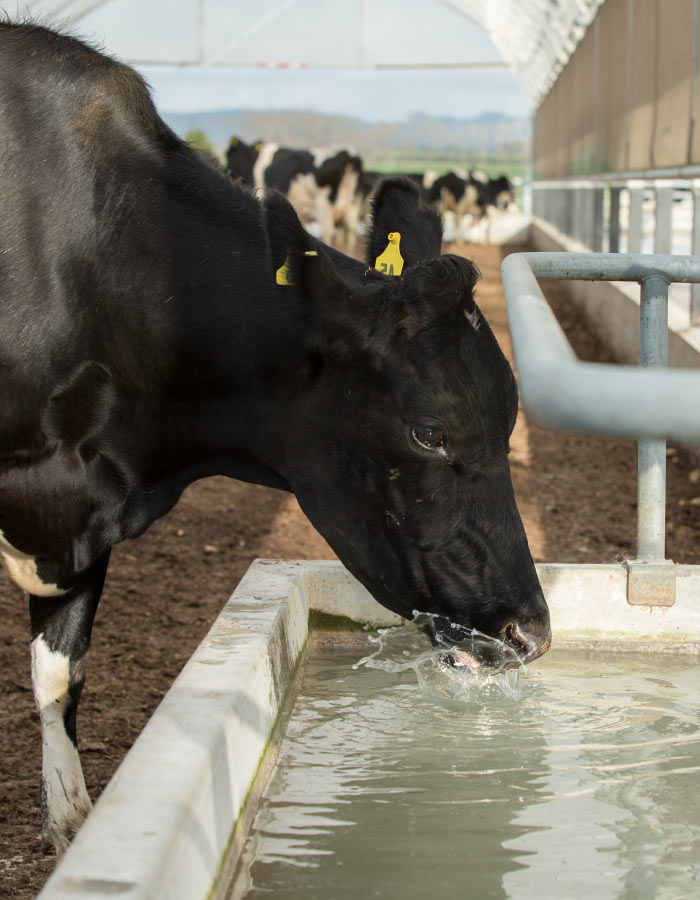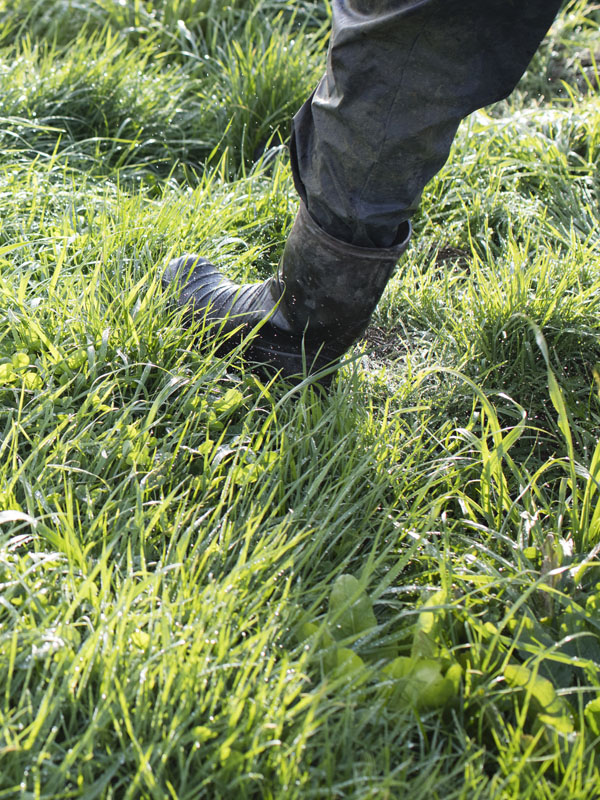PROLIQ NUTRITION
Processes.
PROLIQ FEEDING GUIDELINES
DOWNLOAD THE GUIDELINES - PDF
PROLIQ FEEDING GUIDELINES.
DESCRIPTION
- Liquid by-product of milk processing.
- Average dry matter 34-35%.
- Flowable and pumpable.
- Source of sugar.
FEED VALUE
- Primarily a supply of sugar in the form of lactose to improve cow and rumen energy balance.
- Lactose content 20-21 grams/100gm ww.
- Macrominerals, particularly calcium, potassium, phosphorus and sodium.
- Palatable to most cows, once they have got adapted to taste and smell.
- Complimentary to most pasture-based systems.
STORAGE
- Leak-proof tank or vat, able to hold a minimum of 30,000 Ltrs.
- Molasses grade tanks are recommended.
- As for all feeds, tanks need to be able to be cleaned and be free of other products before adding Proliq.
- Refer to the 'On-Farm Milk Collections Plans and Specifications' information for set back recommendations from milk storage and receiving area
FEEDING OPTIONS
- Ad-lib in troughs, ideally located where access can be controlled e.g, at dairy exit or on concrete stand off or feed pad areas.
- Preferred feeding method is mixed with other feeds via a mixer wagon.
- Ideal complement to low sugar feeds such as Palm Kernel expeller meal but also increases palatability, intake rate and total nutrient intake of other drier feeds e.g, maize or cereal silages, other silages, dry product or commodity feeds, soya bean or canola meal etc.
- Can be fed in dairy via in shed liquid dispensers, alone or added to other dry feeds.
- Can be added on top of suitable feeds in mobile troughs, on top of feed wagon or on top of feeds already distributed along feed pad troughs NB: This can be difficult and individual intakes are more erratic than with other methods.
CAUTIONS
- This feed contains rapidly fermentable sugars so requires controlled introduction as for similar feeds eg Molasses, sugars, fruit, beet, confectionary, baking waste etc. Mixing with other feeds is lowest risk, feeding in ad lib troughs is highest risk. Keep intake consistent once target intake is reached to minimise potential rumen issues - SARA, rumen acidosis.
- High potassium feeds should not be fed to close pre calving cows except with specific expert advice and accurate calculation of total diet DCAD and calcium content. High risk of milk fever / hypocalcaemia with high potassium intakes.
- When fed to newly calved and peak lactation cows, total diet must contain adequate calcium and magnesium.
- Be aware that hot or hungry cows can consume large volumes quickly in ad lib open trough situations, potentially leading to sub-acute rumen acidosis (SARA) and rumen acidosis even where Proliq has been fed correctly for some time, especially if total trough space is inadequate for herd size. Normal consumption rate varies - 4-20 litres per minute - total rate plus extra time can equal risk for bigger or dominant cows.
- All carbohydrate feeds, especially sugars, are capable of fermentation during storage if conditions are right. Ensure that storage tanks are free of other fermentation by-product feeds such as yeast and distillers liquids in particular.
- While the fat content is minor, any feed that contains unprotected fats or oils can go rancid if stored incorrectly or for long period.
Rumen function and health has a direct effect on total feed conversion efficiency - the target is to have as large a beneficial rumen microbial population working as hard as possible in a healthy rumen that is capable of moving and mixing feed, and absorbing nutrients (VFA's and some minerals) out of the rumen ASAP.
Sugars are an essential part of this process, especially for the functionality of the rumen wall itself.
This is all in addition to the energy ultimately made available to the cow herself both from the sugar fermentation, and from better use of other feeds in the diet. The rumen works best when there is a constant consistent intake of nutrients - unfortunately growing grazed pasture does not supply constant consistent amounts of sugar, which is dependent on a range of variables, many beyond our control.
Consequently, the controlled supply of sugar to the rumen can have synergistic effects with the total diet, increasing nutrient supply to the cow above the value of the sugar itself.

Cows have a limited gut size, although this can be trained to have greater capacity with correct feeding and management over time. The greater the amount of nutrients a cow can consume in her available feeding time, the greater her potential health and productivity. Liquids can add significant amounts of dry matter to a diet without displacing anything else, especially where the addition of other bulkier supplements would make the total diet too bulky, with too much NDF, for the cow to physically consume in the time available.
Palatable liquid feed.
Palatable liquid feeds can be used to disguise unpalatable additives such as essential minerals or to ensure their better distribution throughout the feed. Liquid feeds such as Proliq can be used to increase the moisture content of dry feeds to increase rate of consumption. Less dry feed is dropped. By increasing bite size and bite rate, total drymatter intake can be increased. In addition to improving productivity potential, increasing intake per cow, is advantageous to both animal and environmental welfare, improving total feed efficiency.
Milk based feed.
Milk based feeds have the potential to replace some of the macro minerals removed from the cow in milk. In particular, calcium, sodium and phosphorus. NB Do not rely on such products alone as being able to replace all other supplementation - this needs accurate total diet calculation, and correlation with production, cow size etc.
Potassium (K) is the most significant macro mineral in Proliq.
Pasture requirements for potassium are generally greater than the cow's requirement for potassium so in most cases cows with adequate intake of high quality pasture will not have a requirement for additional K.
In fact high potassium feeds can increase the risk of hypocalcaemia (milk fever) in particular, both clinical and sub clinical. This risk is highest pre calving and in freshly calved cows.
Risk is nullified with adequate calcium supplementing limeflour. However, there are specific circumstances where cows require additional K.


- Hot cows eat less grass but require more K to maintain normal physiological function. Heat may also mean drought so less pasture is available.
- Increasingly, there are circumstances where pasture intake is reduced or nonexistence e.g housed cows. Depending on the other feeds being used, it is possible that the diet will contain inadequate K (important in such circumstances to look at a complete feed mineral analysis)
- Proliq is an ideal K supplement for most of these situations.

TESTIMONIALS
"PROLIQ is fantastic feed for our cows, we get a high ME feed at a cost-effective price at the turn of a tap. With the added bonus of potash to pasture that offsets the fertiliser costs on farm. We have found Proliq maintains good cow condition throughout the season. We use a gate timer which lets our cows amble on down to the shed at their own pace to have a feed on the pad before milkings - our cows love it!"
Shaun Kalin, South Taranaki
CONTACT US.
Contact us to find out more on how our stock supplement can produce the results you require with your stock.